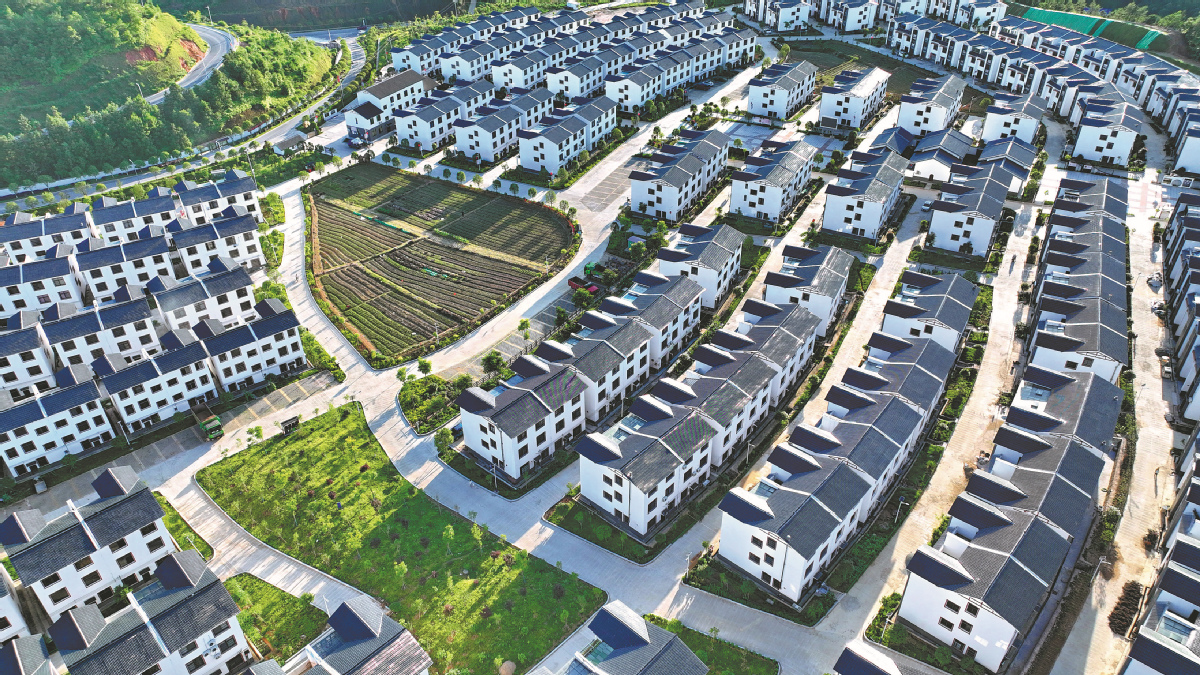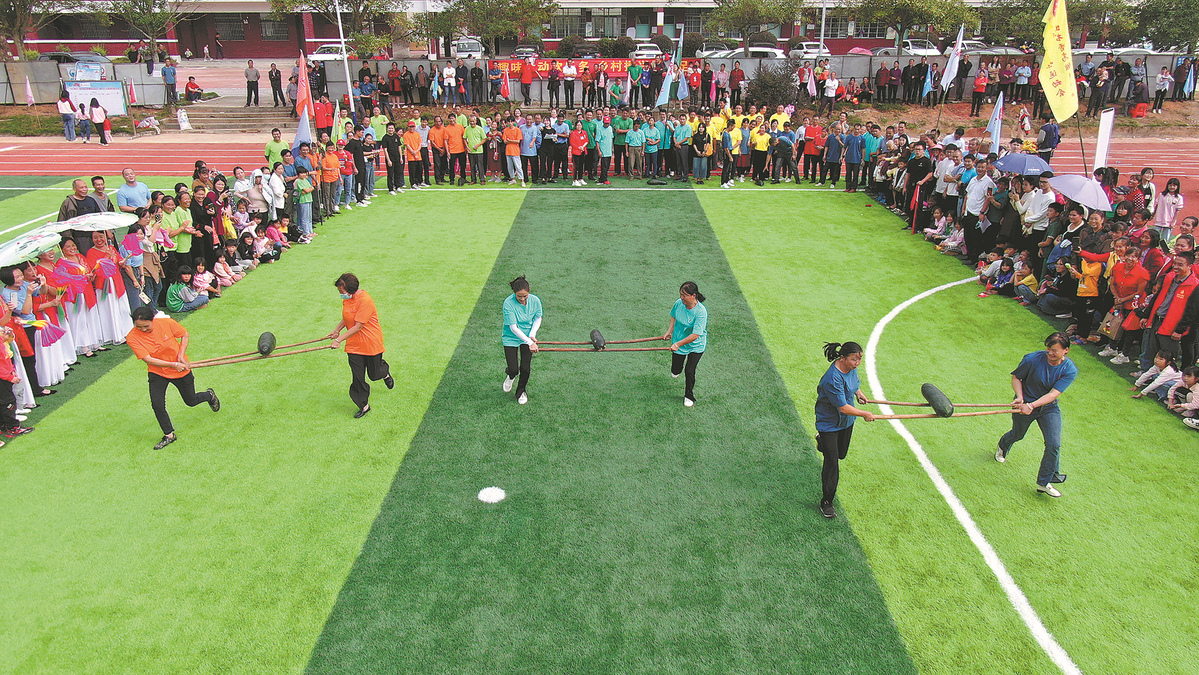


An aerial view of Qixin village fields (left) and Zikeng village houses (right) in Huichang county, Jiangxi province. (CHINA DAILY)
Rao Yuxiao never expected that returning to the countryside would increase his income severalfold.
In 2012, after graduating from college, Rao left Huichang county in Jiangxi province and moved to Fujian province. He quickly found a job as a planner for an advertising company in Xiamen.
"I worked from nine to six every workday. At that time, the term '996' (9 am to 9 pm, six days a week) didn't exist yet, but the work pressure was still significant," said the 34-year-old.
The turning point came in 2015. That year, Rao married and returned to his hometown of Huichang "for a stable and cozy life".
By then, rural areas had started providing subsidies for young people returning to their hometowns to farm.
Nowadays, there are more diverse policies supporting young people who are returning to the countryside, he said. For example, the county strongly supports large-scale farming and provides agricultural technology guidance and end-to-end agrarian services, including drone spraying and harvesting, all of which can be done on a single mobile platform.
Previously, Rao made around 150,000 yuan ($21,100) a year working in Fujian. "Now, I can earn hundreds of thousands more. This is beyond what I had imagined," he said.
The policies are part of the rural reform initiatives implemented in Huichang in 2022, a year after nearly 100 million rural poor in China had been lifted out of abject poverty.
At the end of February 2021, President Xi Jinping announced China had secured a "complete victory" in its fight against poverty. All 832 counties designated by the government as poverty-stricken in 2013 have shaken off their poverty labels. China has achieved the poverty reduction goals of the United Nations' 2030 Agenda for Sustainable Development 10 years ahead of schedule.
Many of China's rural areas have also become models for poverty alleviation in developing countries, but success also brings greater responsibilities.
As a result, the focus of China's rural work has shifted to comprehensively promoting rural vitalization.
In 2021, at the Central Rural Work Conference, Xi emphasized that after achieving victory in poverty alleviation, the focus should shift to comprehensively advancing rural vitalization, marking a historic shift in the focus of rural development. Importantly, it is crucial to maintain the achievements of poverty alleviation and effectively connect them with rural vitalization to ensure continued prosperity in rural areas, he added.

Villagers participate in a sports event featuring fun activities in Huichang on Oct 14. (LIU ZHAOCHUN/CHINA DAILY)
Collectives in action
Qixin village in Mazhou town, Huichang, is one good example.
Many of its residents had moved to other cities, which had left over 85 percent of the town's farmland uncultivated, said Ou Ling, the deputy town chief.
Over the past two years, the town encouraged farmers to entrust their land to the village collective economic cooperatives.
The town also established a seedling production center and a comprehensive mechanized agricultural service center to maximize the production efficiency of the land.
The seedling production workshop integrates sowing operations, post-sowing management, and farming-related services. Up to 1,000 mu of seedlings can be sowed per day.
Meanwhile, the mechanized agricultural service center reduces production costs by implementing large-scale operations.
"In 2021, the cost of plowing per mu was 160 yuan. Now, it's only 110 yuan. Machine planting costs were 100 yuan per mu last year, but now they are down to 80 yuan. Harvesting costs have also decreased by nearly 20 yuan per mu. According to our calculations, through comprehensive mechanized agricultural services, we can save 90 yuan per mu from planting to harvesting compared with last year," Ou said.
"Our town's total area of early, middle, and late rice cultivation is over 30,000 mu. As a result, the agricultural costs in our town have been reduced by over 2 million yuan," he added.
Farmers are able to conveniently place orders through an intelligent platform to access centralized seedling cultivation, seed planting, land management, and centralized procurement of pesticides and fertilizers.
"Just like urban residents can order a taxi using their smartphones, we also have 'Didi farm machinery'," he said.
Liu Jianqing from Xiabao village said, "My sons and daughters are all working outside, and every year during the busy farming season, I used to spend money hiring assistance on the platform. Now, my fields are all managed properly, and my son can order land cultivation services on the platform, even while working in another province."
Since the introduction of the online service, Liu said he had assumed the role of a "hands-off manager".
Pan said that due to the long-term migration of rural populations to urban areas to work in industrial jobs, there is a labor shortage in rural areas.
"Additionally, rural aging is a serious social issue, with most workers being middle-aged or older, especially those aged 50 and above. Moreover, the efficiency of agricultural production remains low, creating a growing need for agricultural services (in rural areas)," Pan said.
"So we need a modern, centralized system and to utilize scattered farmland to improve agricultural mechanization services, like we have done in Huichang. This will allow even the elderly to use smartphones to order agricultural services while increasing farmers' incomes, " he added.
点击右上角![]() 微信好友
微信好友
 朋友圈
朋友圈

请使用浏览器分享功能进行分享
